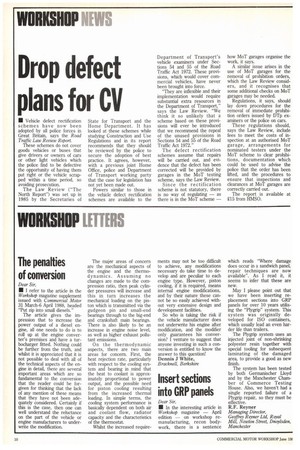The penalties of conversion
Page 106

If you've noticed an error in this article please click here to report it so we can fix it.
Dear Sir, • I refer to the article in the Workshop magazine supplement issued with Commercial Motor 31 March-6 April 1988, headed "Put zip into small diesels."
The article gives the impression that to increase the power output of a diesel engine, all one needs to do is to roll up at the engine converter's premises and have a turbocharger fitted. Nothing could be further from the truth, and whilst it is appreciated that it is not possible to deal with all of the technical aspects of the engine in detail, there are several important areas which are so fundamental to the conversion that the reader could be forgiven for thinking that the lack of any mention of these means that they have not been adequately considered. Certainly if this is the case, then one can well understand the reluctance on the part of the vehicle or engine manufacturers to underwrite the modification. The major areas of concern are the mechanical aspects of the engine and the thermodynamics. Assuming no changes are made to the compression ratio, then peak cylinder pressures will increase and this in turn increases the mechanical loading on the piston which is transmitted via the gudgeon pin and small-end bearings through to the big-end and crankshaft main bearings. There is also likely to be an increase in engine noise level, as well as higher exhaust pollutant emissions.
On the thermodynamic aspects, there are two main areas for concern. First, the heat rejection rate, particularly with respect to the cooling system and bearing in mind that the heat to coolant is approximately proportional to power output, and the possible need for piston cooling resulting from the increased thermal loading. In simple terms, the cooling system performance is basically dependent on both air and coolant flow, radiator capacity and the characteristics of the thermostat.
Whilst the increased require ments may not be too difficult to achieve, any modifications necessary do take time to develop and are peculiar to each engine type. However, piston cooling, if it is required, means internal engine modifications, and by their nature these cannot be so easily achieved without very extensive design and development facilities.
So who is taking the risk if the vehicle manufacturer does not underwrite his engine after modification, and the modifier only guarantees his conversion? I venture to suggest that anyone investing in such a conversion is entitled to know the answer to this question!
Dennis J White, Bracknell, Berkshire




































































































































